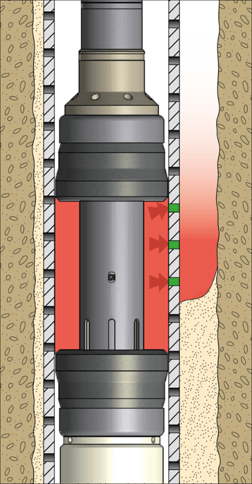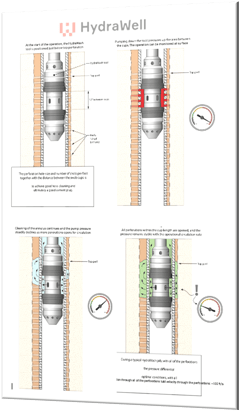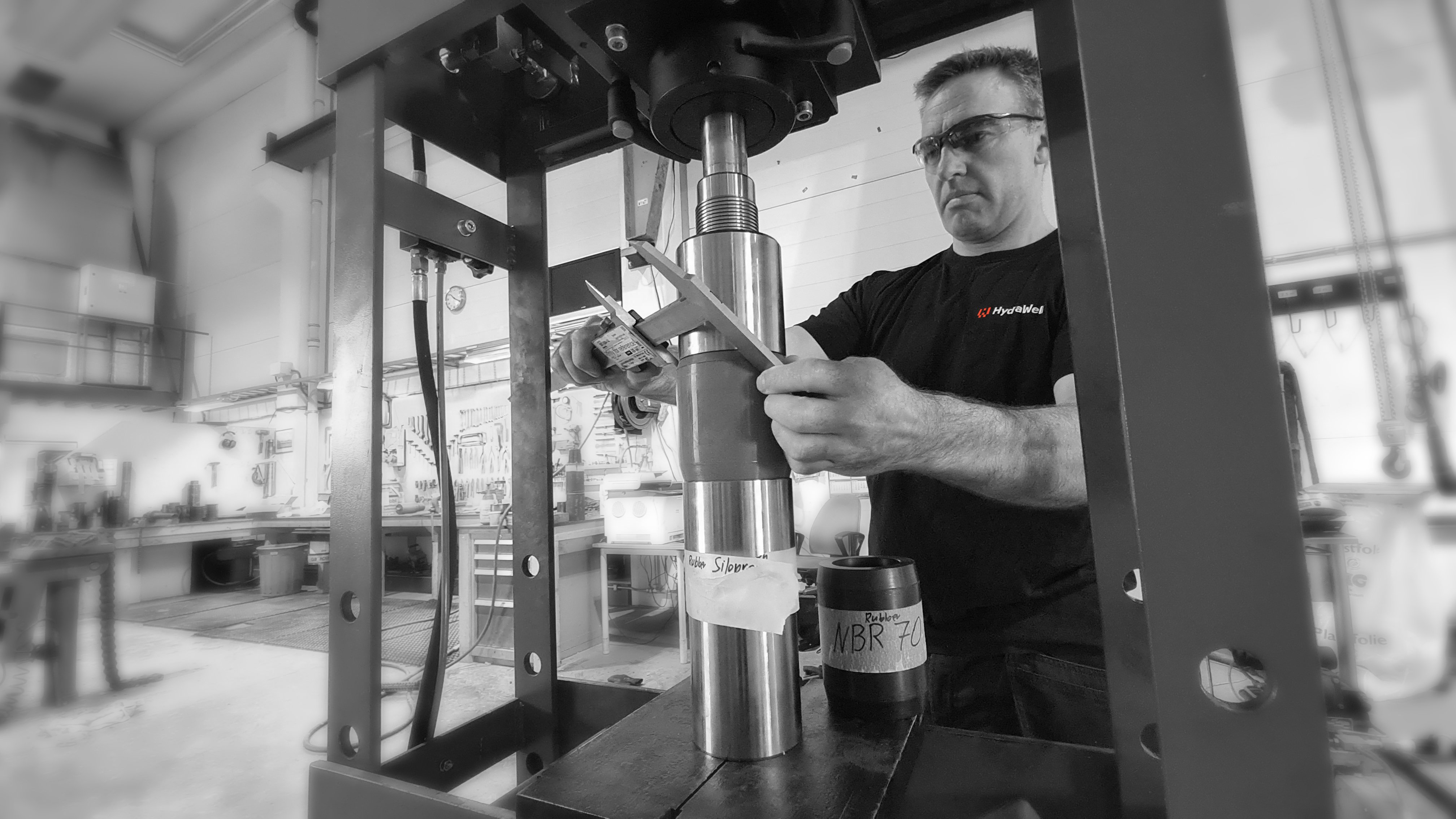Why ensuring Limited Entry during PWC® washing operations is so important
By Arne G. Larsen - February 15, 2021
Tom Leeson and Arne Larsen, HydraWell's Chief Commercial Officer and VP Marketing, answer this critical question.
Clients often ask us: “How can you be sure that the low side of the casing is cleaned during a Cup-based PWC® operation?”
The answer is simple. Limited Entry.
By generating a certain minimum pressure drop through perforations, all perforations are taking fluid. But what does that actually mean!?
We’ll explain with an everyday analogy… let’s look at a shower head:

If you open the water faucet just a tiny bit, water will only exit through a few of the holes in the shower head:
.png?width=454&name=shower%20head%202%20NEW%20(1).png)
Opening up the water faucet a little bit more, will result in water exiting more holes:

However, it’s not until the water faucet is fully opened that water comes out through all holes:
.png?width=453&name=shower%20head%204%20NEW%20(1).png)
As the flowrate through a specific hole increases, so does the pressure drop across that hole. This causes a back pressure that drives the flow to other holes in the showerhead until the pressure drop is evened out across the maximum number of holes.
This is exactly how Limited Entry works; pressure drop over a nozzle. And in a cup-based PWC® application: pressure drop through perforations.
Now, let’s consider the math for Cup-based PWC® tooling, where a limited number of perforations are exposed to flow between the cups.
If we are pumping washing fluid at 9 bpm (380 gpm) through 12 ea 0.42” EHD (Effective Hole Diameter) perforations, the theoretical pressure drop is about 60 psi over the perforations.
If 6 of the perforations are not taking fluid during the washing operation because they are plugged by debris, the pressure drop will increase to 260 psi. In other words, 260 psi is pushing on the debris outside the plugged perforations. Dislodgeable debris will be removed and the pressure drop will be reduced to 60 psi when all 12 perforations are again taking fluid and the washing operation can proceed to the next group of perforations.
But what happens if we pump with insufficient flowrate? Or through holes that are too big? Or through too many perforations simultaneously?
In these instances, if we for example:
- Pump washing fluid at 9 bpm through 12 x 0.9” EHD perforations, or
- 2 bpm through 12 x 0.42”, or
- Straddle 36 perforations instead of 12 (increased distance between cups)
The theoretical pressure drop across the perforations is approximately 3psi.
If 6 ea perforations are plugged by debris, the pressure drop increases but only to approximately 10 psi and it is clearly far less likely that the debris will be dislodged and removed from the annulus circumference (only high-side of the wellbore is being cleaned properly).
Hence, the minimal back pressure is unlikely to ensure the flow is spread across all perforations. When the flow takes the path of least resistance we fail to clean and clear the whole annulus circumference.
In practice, we normally expect the casing to lie on the low-side of the well. The high-side therefore becomes the path of least resistance as the annular cross section is greater here, and the low-side of the annulus gets bypassed unless we ensure Limited Entry distributes the flow through all the perforations.

Insufficient flow per perforation tends to clean only the high side of the annulus
In conclusion, insufficient flowrate per perforation creates insufficient pressure drop between the wellbore and annulus resulting in poor debris removal and surface cleaning. This in turn increases the risk of a poor-quality cement barrier being installed and a potential isolation failure.
- Why will it potentially be a failure, you ask?
- Because the subsequent cement job relies on displacing a fresh, low-rheology wash fluid (or spacer fluid) and not the old wellbore fluids (settled out barite, debris...) from the wellbore low-side that we didn´t sufficiently clean during the wash job.
So, how do we overcome this?
- Ensure sufficient pressure drop across the perforations to ensure even distribution of flow. We recommend maintaining a pressure dop, usually around 30 psi when the annulus is clear and allows ‘free-flow’.
- Ensure cleaning has been completed and your toolstring pass speed across the perforated interval is sufficiently slow. This will allow the pressure drop to reduce close to your predicted free-flow value.
However, BEWARE!
Our HydraHemera™ Jet-based PWC® system do not rely on Limited Entry to adequately clean the wellbore prior to cementing. The bulk flow model, calculating minimum flowrates, appropriate perforation sizes and pass speeds that cup-based PWC® systems rely on, are much more complex than those for jet-based systems.
Please give us a call, or look out for our next blog, to learn more about how our operations and systems are designed to support challenging wells.





